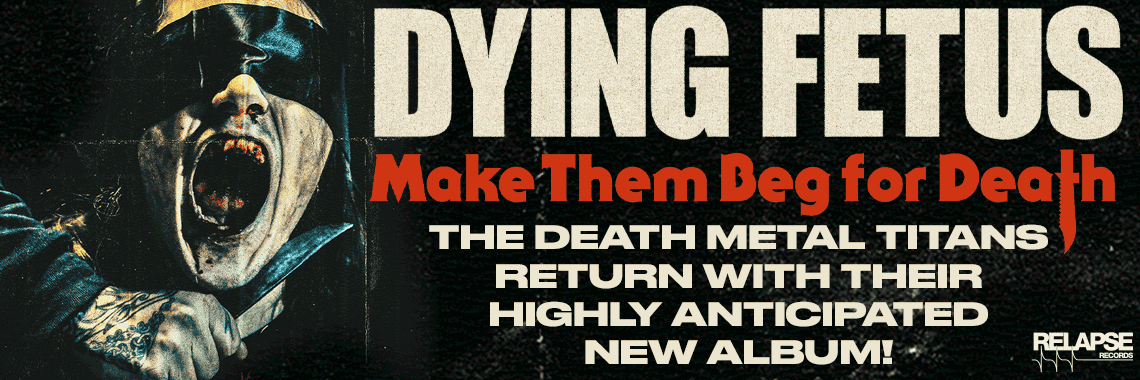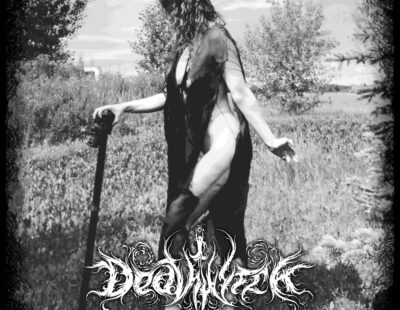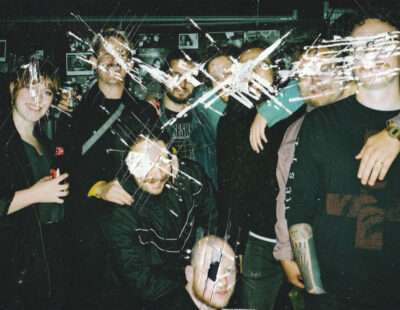
Good goddamn is HÄXAN some dark, disquieting, creepy, heavy, seriously avant garde, Hellraiser-esque torment-is-delight nastiness! Composed to serve as a soundtrack for Benjamin Christensen’s 1922 witchcraft n’ Satan heavy silent film of the same title, the latest from EORÐESLAJYR — that’s “earth slayer,” if you dare call their name — has got a Scorn by way of Swans by way of circa Too Dark Park Skinny Puppy vibe and its textures and left turns will fuck with your head.
To celebrate the album’s release — pick up your copy here — we asked the to delve into a few specific moments of inspiration drawn from the film that went on to possess the music…
” Uprooting The Seed”
This song is based on an early scene in Haxan that is apart from the main narrative. We see two men sneaking into a house in the dead of night, carrying with them a suspicious cargo wrapped in cloth. Inside the house they carry the object upstairs, however they are not alone. There is a woman in the house hiding behind a drawn curtain. She sees them enter and, out of curiosity, sneaks upstairs after them. The men hurriedly bring the cloth bundle into a study and lift it onto a desk. It is here where we learn what the bundle contains – a fresh cadaver, presumably robbed from a grave or mortuary. One of the men pulls out a blade, but the other stops him and suggests they say a prayer first. As the two men raise their hands together the woman enters. Her eyes fall upon the body and she flees, slamming the door behind her. She runs out into the street, banging on doors and screaming out for help, but the men are in pursuit. The catch her and fade to black.
This is one of the most ominous scenes in the film. It’s not as laden with overtly satanic imagery as some of the others, but the implication of what these men are up to and what they plan to do with the woman after they capture her is not immediately clear. Upon first viewing we assumed they intended to perform some kind of ritual, however we later learned that their intention was rather more innocent and that they simply wished to perform an autopsy on the body in the hopes of learning more about what caused the person’s death. However our misunderstanding is shared by the woman in the scene and her horror at the uprooting of the man’s corpse and its impending desecration.
This is definitely our most black metal and doom influenced track. With this song we wanted to achieve a sense of escalating dread. One that builds with the scene and resolves in a blistering cacophony as the woman comes to her chilling realization — that death is not the end. Our vessels remain. We all rot.

“Lullaby”
This song is based on a section of the filmwhere an old beggar woman is accused of witch-hood. The old woman is captured and brought before the holy order to answer for her sins, however she denies any malevolent wrongdoing or knowledge of witchcraft. Unsatisfied by her denials the monks order her to forfeit herself to torture in an attempt to coerce a confession. At first the old woman tries to bear the pain – whilst the monks laugh and delight in her anguish. However she soon gives in and confesses, declaring herself guilty of witchcraft and satan worship. Vindicated, the monks demand the old woman tell more of her malevolent acts and blasphemy and so she regales them with tall tales of how she bore the fruit of Satan and doused herself with the sap of Lucifer. Finally, as the monks laugh uproariously, she tells them of how she soared through the air with the rest of her coven to attend the Black Mass.
This is one of the scenes of the film that really hammers home what Benjamin Christensen was trying to communicate with Häxan: The danger of witch-trials and the cyclical nature of how false confessions of the wrongly-accused can only lead to further injustices against other innocent parties. The monks in Häxan are really the antagonists of the story, and in this scene they are shown at their most despicable – delighting and reveling in the torture of an old woman. Their hypocrisy is laid bare through their titillation at the woman’s fanciful confessions.
We wanted this music to be juxtaposed to the imagery, we sympathize with the old woman and chose to soundtrack her torment in an equally sympathetic tone. Our music for this scene is easily the softest, most gentle and serene part of the album. It’s the closest to a traditional song structure – with a simple repetition of guitar harmonics, glockenspiel and a lead cello arrangement by Anna Clock. As the old woman recants her confession the music builds and as the details become more and more absurd the crescendo of vocal harmonies and synthesizer escalates until it erupts in a rapturous ascension as we see the witches arching across the sky on their broomsticks. The old woman’s torment is over, at least in this moment, as she will ultimately perish at the stake alongside all those whom she has falsely implicated.
“The Old Horned One”
This is based on probably the most famous or well known scenes in Häxan, which is the Black Mass. The scene starts with the witches flying on their broomsticks to a black sabbath, where they dance naked with devils and prove their devotion to Satan. As the demons bang on drums and blow on their horns, they encourage the women to reject Christ in all his forms. They are made to step on the cross and if they are hesitant they are beaten. As this is going on, Bacchus and Baal and all of Satan’s handmaidens are preparing a soup made from unbaptized babies and toads.
There’s a lot of tribal drums and vocals influenced by Mongolian throat singing in this track. In Medieval Europe they would have viewed anything savage or pagan as intrinsically connected to Satan. They strived for total spiritual purity and chastity. I think by using some of these eastern and non-christian musical influences, we wanted to depict what their vision of hell might look like. The climax of the song when the guitar drops is when the witches all line up to kiss Satan’s arse. It’s a total rejection of the Christian faith and I think it’s also symbolic of sexual liberation for them.
Towards the end of the track when the organ comes in, is when a suspected witch is snatched from her home and brought to the clergy for questioning. The lyrics for this are from the 1865 poem ‘Inno A Satana’ by the Italian poet Giosue Carducci, which is an ode to and celebration of Satan as an anti-hero in the Bible:
To you my daring
verses are unleashed,
you I invoke, O Satan
monarch of the feast.
Put aside your sprinkler,
priest , and your litanies!
No, priest Satan
Does not retreat!
“Put To Death What is Earthly in You”
This is a really beautiful scene. It begins with a young Monk (Brother Johannes) staring outside his window at flowers moving in the breeze. He then leaves his room and approaches an older monk. Johannes confesses that he has had sinful fantasies and experienced lust for women. Upon hearing this the older monk directs the young man to remove his cloak and bare his body. He then proceeds to beat Johannes with a cat o’ nine tails. He explains that he is only beating his corrupt body so that he can purify his soul. The title of this track is a reference to this act.
This whole first choral section was written by our vocalist Sam, it’s just voice and an old zither that he found. We wanted to recreate the intense spiritual epiphany that some religions associate with pain and self sacrifice. When the flagellation is complete, the older monk reports to the prior of the monastery that a witch has visited Johannes, which explains why he has been having visions of women and been tempted by the flesh.
As the choral section of the track ends, things take a dark turn. The monks have decided that a woman who previously visited the monastery must have bewitched Johannes, so they take her to their dungeon in an attempt to force her to confess. Even taking her baby hostage and threatening to take it away from her. There’s a lot of textural washes and prepared guitar loops to drive a much darker, sinister feeling for this section
As the final section gets into some heavy synthesizers and vocal harmonies, the woman finds herself unable to bear the torture any longer. She confesses that she has heard tale of how witches might make thunder out of water. She believes that this information could be her salvation and safety, when the priests are just looking for an excuse to burn her at the stake. The song ends as the hangmen rush into the dungeon and lead her away, the last scene shows the procession of inquisitors leaving the village.







